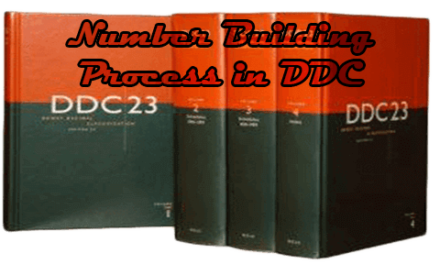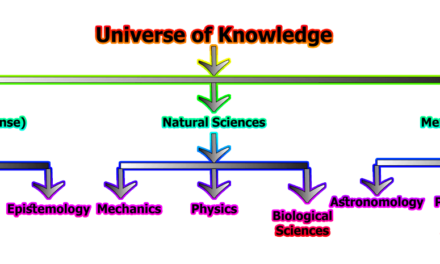A notation is a series of recognition symbols used to represent a subject and it is a very significant feature of the classification of books in a library. A book notation is a sequence of symbols that stands for a class name or a division or subdivision of a class and creates a convenient way of classifying the format. In the rest of the article, we are going to know the objectives & functions of notation and qualities of notation.
Objectives & Functions of Notation:
An ideal notation performs the following objectives & functions:
a. Symbol to represent a subject: It provides a symbol to represent each subject or term which remains constant.
b. Helps proper arrangement of materials: Notation plays an essential role in the proper arrangement of reading materials. The symbol or sign assigned for the subject matter of a book is written on the spine of that book which helps to arrange the books easily on the shelves.
c. Helps to organize books in a specific and related subject: Organizing the books of a specific subject in the same class is one of the prime objectives of notation.
d. Substitute for a subject: Notation works as a substitute for the subject of a book.
e. Helps to show strength and weakness of collection: It can provide an idea about the strength and weakness of collection on a specific or group of subjects.
f. Can show combine of symbols: It provides a combination of symbols of classification books, i.e. to show related subjects, to analyze books on several subjects, places, etc.
g. The hierarchical arrangement helps easy referral: It provides a classification mark to fix the place of a term in the hierarchy of the schedule, so it can be easily referred either by term or by class mark.
h. Short sign convenient in various services: It works as a store sign to be used conveniently on the spine of a book catalog entry, shelf list, book charging cards, etc.
i. Shows sequence between main and sub-ordinary classes: It shows a sequence between the main class and subordination of a subject which helps to find out the exact books within a short amount of time.
j. Helps in charging: It provides a number of charging books.
k. Helps in the accommodation of new books: It should make possible insertion of new subjects.
Qualities of Notation:
A notation should be easy to read, write, and remember. Some essential qualities of a notation are being followed:
- Pure vs Mixed Notation: In pure notation, the users need have to learn the filing value. Mixed notation doesn’t have any accepted filing value but it provides more symbols for use than does pure notation. In other words, mixed notation gives a longer base than does pure notation. The base means the number of symbols available in a system, for example; if we use numbers in a system (0-9) the base is ten. If we use letters (A-Z) the base is twenty-six. If we mix both numbers and letters the base will be thirty-six.
- Brevity: Bliss argued that a notation should be as short as is feasible. The notation requires to be written on many records such as the spine of the book, the catalog cards. Therefore the brevity is notation is desirable, for example; if we use a number we can represent ten subjects with one letter, six hundred and seventy-six (26 × 26) with two letters, and so on.
- Alphabetical Index: In schedules, we arrange subjects or concepts in a systematic order but systematic order isn’t self-evident. We add a notation to schedules to show where – about of the subjects in the sequence. It must:
- Locates topics within the systematically organized classification.
- Show related aspects of a subject which the classification itself has scattered.
- Structures Notation: The structural notation displays reflects the structure of the scheme. Such a notation is known as a hierarchical kind, as well as expensive. Structural notation tends to be longer than non-structural notation, for examples;
| Structure | Subjects | Non-structure |
| B | Mathematics | B |
| B2 | Algebra | B2 |
| B25 | Higher Algebra | B3 |
| B252 | Binary Algebra | B4 |
- Hospitality: As stated earlier, the schedule lists subjects or concepts in a helpful way, and notation is added to schedules to show it’s ordered. This ability to accommodate new concepts in a correct place is known as hospitality. There are two types of hospitality which are as follows:
- Hospitality in Array: The first and the last symbols in each array may be reserved for the purpose of extending the array. In numerical notation, the digit 9 would never stand-alone, it would be used to introduce more co-ordinate concepts. Similarly letters Z, z can be used for the same purpose. For examples;
- 1, 2, 3, 4, 5, 6, 7, 8, 91, 92, 93, …….., 98, 991, 992, so on.
- A, B, C, D, …….. , Y, ZA, ZB, ZC, …….., ZY, ZZA, ZZB, ZZC, so on.
- a, b, c, d, …….. , y, za, zb, zc, …….., zy, zza, zzb, zzc, so on.
- Hospitality Chain: This is hospitality to new subordinate concepts. A decimal fraction notation has infinite hospitality in the chain.
- Hospitality in Array: The first and the last symbols in each array may be reserved for the purpose of extending the array. In numerical notation, the digit 9 would never stand-alone, it would be used to introduce more co-ordinate concepts. Similarly letters Z, z can be used for the same purpose. For examples;
- Flexibility: The ability to accommodate new concepts is hospitality. The ability to accommodate alternative to suit certain needs is flexibility.
- Alternative Location: Life of Chemist may be closed either at Biography or at Chemistry to suit the needs of the library. We find such examples in DDC.
- Alternative Treatment: We can alter the filing order to suit our needs and in that case, we need to alter the citation order also. UDC has a very flexible notation the scheme has suggested filing orders for the facet indicators but that is mandatory.
At last, we can say that a series of symbols or signs either in numbers or letters, or both to be used in the classification scheme to represent various terms, subjects, and related areas.

Library Lecturer at Nurul Amin Degree College










